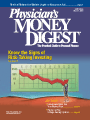Publication
Article
Physician's Money Digest
PRN: Market Timing
Author(s):
I've restrained myself from writing onthis preoccupation that so many peoplethink is the key to investing success—knowing when to buy low andsell high. Contrary to this deep wish,neither I nor anyone else has been ableto do it successfully with any rewardingconsistency. And everyone whowrites on the subject pays homage tothis received wisdom.
BANKING ON THE MATERIAL GIRL
WallStreet Journal
But some ideas, or hopes in this case,won't die. This notion was broughthome in a recent article in the , which purported to linka market rally with, of all things, each ofthe 9 album releases by Madonna. Itappears that some analysts just havetoo much time on their hands.
This factoid, if it is that, even topsthe Presidential Election Effect, theSanta Claus Rally, and the Super BowlConnection for stretching credulity. Atleast these other attempted links referto predictable events that affectnational policy and/or a broader spectrumof attention.
MARKET TIMING PHENOMENA
So, for entertainment and exhibitionpurposes only, as they say in the WorldWide Wrestling Federation, take a lookat the following selected list of otherpurported market timing phenomena:
- The January Effect. If the marketgoes up throughout the month ofJanuary, it will be up for the year(2%)—that is, unless it won't.
- The October Effect. The marketusually declines, er, unless it doesn't.
- The December Effect/SantaClaus Rally. Self-explanatory.
- Beginning/End of MonthFactor. Stocks tend to rise early in themonth and then again in the end of themonth (1.4%). Hope for eternal spring.
- Holiday Weekend Surge. Themarket goes up on Fridays before aholiday weekend (1.4%).
- Friday Factor. On Fridays, ingeneral, the market goes up (.3%).
- Monday Plunge . On Mondays,the market falls (0.11%). Apparently,the opposite of phenomena 5 and 6;what goes up must come down.
- Buy-and-Hold Rise. A stockrises when insiders buy and hold for atleast 6 weeks. No surprise there.
- Hot Dice Syndrome. If marketsrise, they tend to do so on 2 successivedays, just like hot dice.
- Best Day/Worst Day Figure.The summary of the best day vs theworst day in the market, averagedover 30 years, yields a difference of1.1%. Bottom line: Timing appears tobe much ado over very little.
The capstone, or should we say theheadstone, for the ever-hopeful market-timing gang is the cumulative burdenof transaction fees for all of thisactivity. And if your investments are tax-exposed,the prospect of an index-beatingreturn, net of these expenses,becomes quite grim.
So the next time the impulse strikesto play this game, ask yourself, "Whatdoes the calendar have to do with mylong-range investing goals?" There isnothing wrong with a judicious dash ofopportunism given a real chance, butkeep in mind that about 1/12 of the mostpromising investments this year willoccur this month. Now that's a market-timingaphorism for the ages.
Jeff Brown, a partner on theStanford Graduate School ofBusiness Alumni ConsultingTeam, teaches in the StanfordSchool of Medicine FamilyPractice Program. He welcomes questionsor comments at jeffebrownmd@aol.com.
